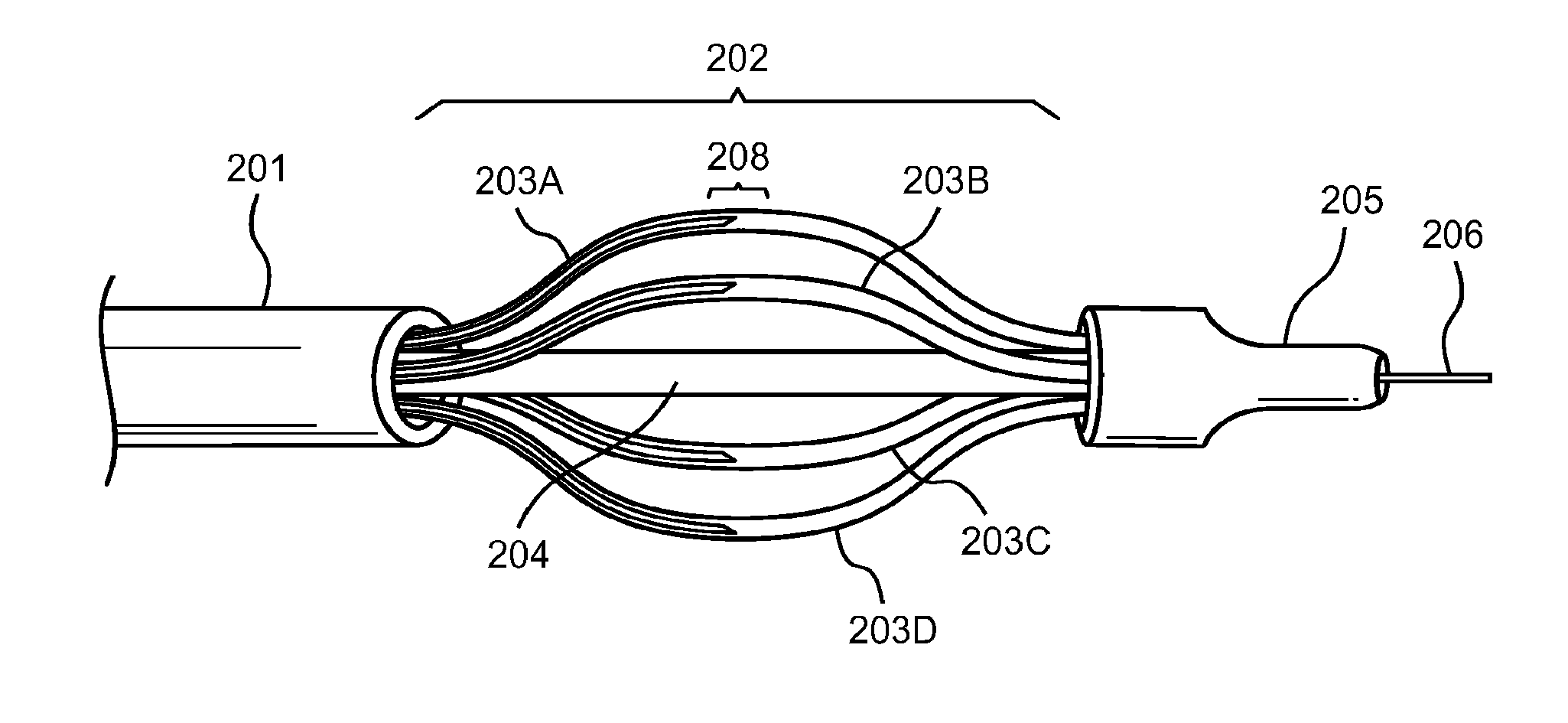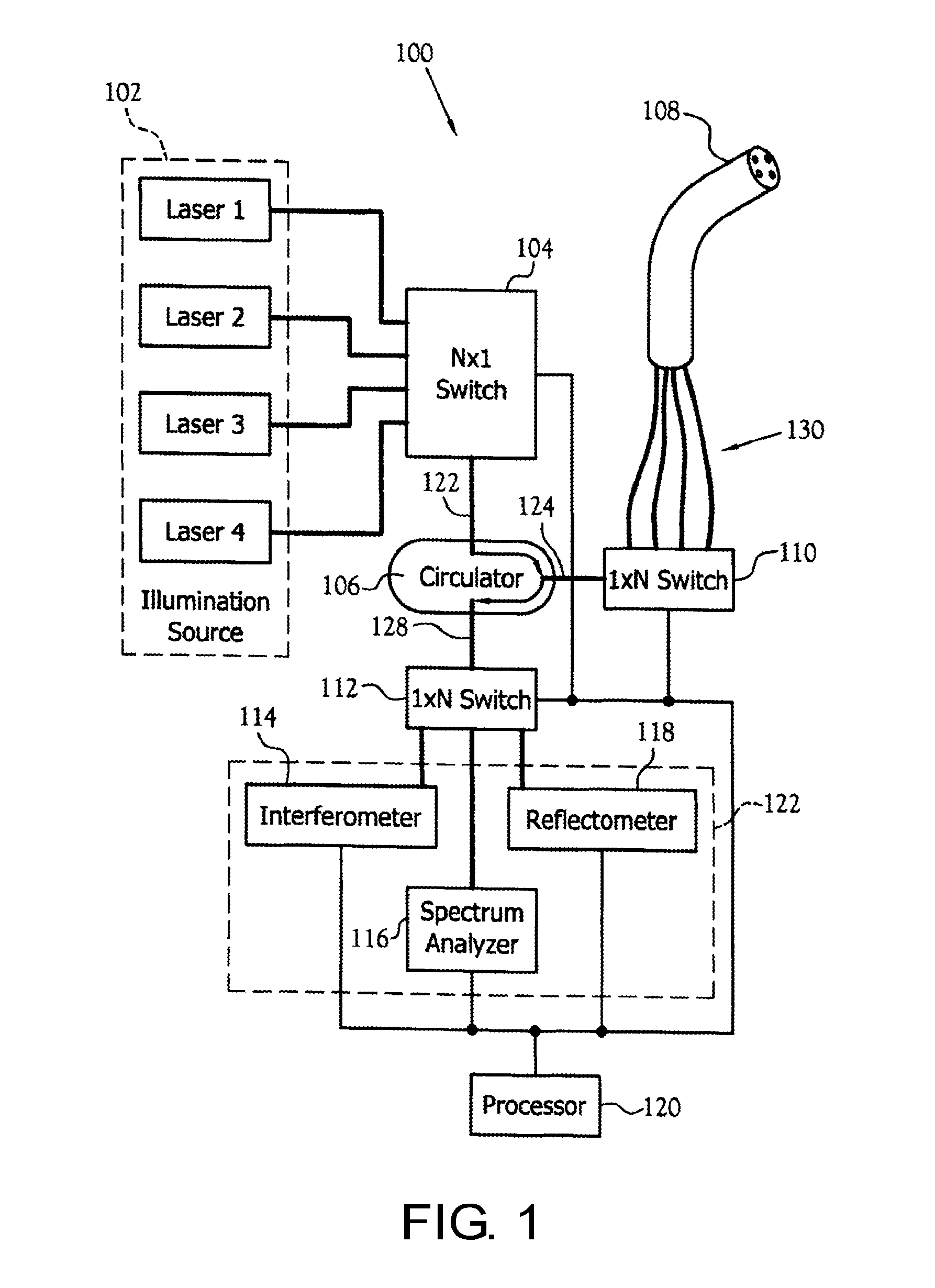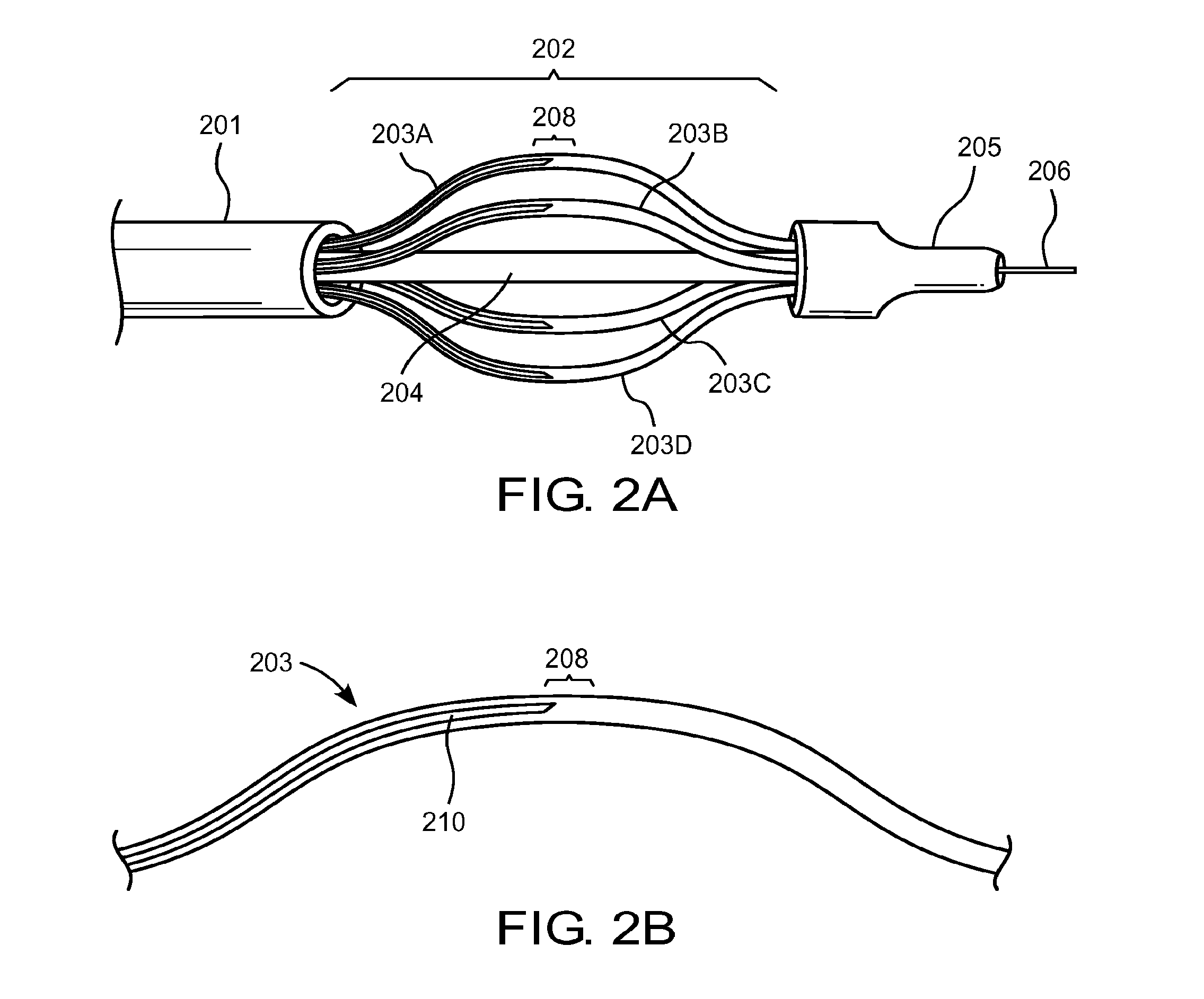Several measurement modalities in a catheter-based system
a technology of a catheter-based system and a measurement method, which is applied in the field of spectroscopic equipment, can solve the problems of significant risks, long and painful recovery, and inability of medical professionals to take advantage of relatively non-invasive catheters, and achieve the effect of limiting the overall exposur
- Summary
- Abstract
- Description
- Claims
- Application Information
AI Technical Summary
Benefits of technology
Problems solved by technology
Method used
Image
Examples
embodiment 1000
[0081]FIG. 10 shows an embodiment 1000 similar to that of FIG. 1, but which includes a particular configuration for performing interferometry, such as any type of OCT. In FIG. 10, the first illumination source is low-coherence light source, such as a broadband light source, such as a super-luminescent LED for performing interferometry. A beam splitter (BS) 114A transmits a portion of the light from source 1, such as 50%, as a reference beam towards a mirror that is part of the interferometer and transmits a portion of light, such as 50%, toward the sample, via switch 104, as a sample beam. The reference and sample beams are combined in interferometer element 114B. Thus, 144A and 114B collectively constitute a Michelson interferometer. The system may cycle through or switch between interferometry and any other analytical technique that the system is capable of, as previously described.
embodiment 1100
[0082]FIG. 11 shows an embodiment 1100 similar to that of FIG. 1 except that an N×1 switch 140 has been added between circulator 106 and 1×N switch 110 so that an interferometer module including a low-coherence, broadband (BB) light source 145 and an interferometer 146, can be more compactly and simply integrated with the system. The broadband light source 145 may, for example be a super-luminescent LED. The interferometer 146 may, for example, be a Michelson-type interferometer. The photodetector(s) for interferometer 146 are not separately shown, but are part of the interferometer unit 146 in the figure. Data from the interferometer unit is analyzed by processor 120. Switch 140 is operated to control whether light will be received and sent along path 124 from / to circulator 106 to perform analytical techniques corresponding to illumination sources 102 or whether light will be received and sent along path 142 to perform interferometry techniques such as OCT using the interferometry ...
PUM
 Login to View More
Login to View More Abstract
Description
Claims
Application Information
 Login to View More
Login to View More - R&D
- Intellectual Property
- Life Sciences
- Materials
- Tech Scout
- Unparalleled Data Quality
- Higher Quality Content
- 60% Fewer Hallucinations
Browse by: Latest US Patents, China's latest patents, Technical Efficacy Thesaurus, Application Domain, Technology Topic, Popular Technical Reports.
© 2025 PatSnap. All rights reserved.Legal|Privacy policy|Modern Slavery Act Transparency Statement|Sitemap|About US| Contact US: help@patsnap.com



